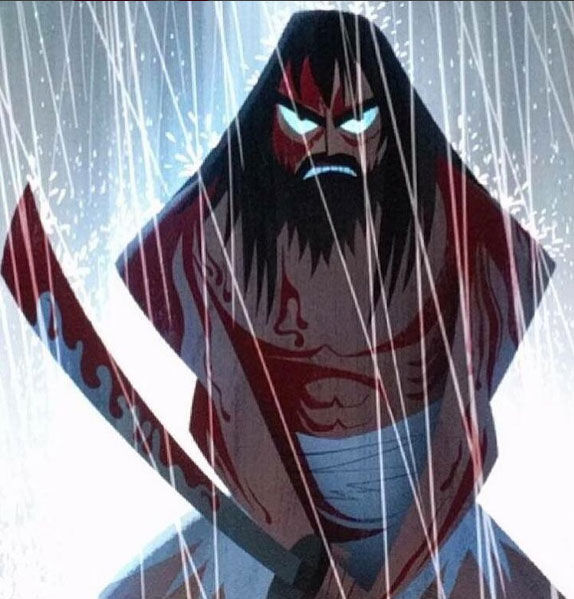Jack is back in new, bloodier season of cult hit ‘Samurai Jack’

A bloody and broken Jack tries to survive the trauma of immortality
As we grow older and change, our interpretations of the media we consume changes too. For example, “Star Wars” starts as a battle between good and evil, along with being filled with energetic explosions. Years later, it becomes a reflection of the Vietnam War, and how hope is the foundation of convictions.
One prime piece of television that has experienced this development of depth is “Samurai Jack.” The series aired from 2001 to 2004 on Cartoon Network, before being cancelled. Only recently has the series been revived by the more mature channel Adult Swim.
The central concept of the show is the struggle of Samurai Jack (voiced by Phil LaMarr), a warrior from feudal Japan, and Aku (voiced by the late Mako Iwamatsu in the original series), a shapeshifting demon who wants world domination. The series follows Jack’s struggle to defeat Aku, after the demon has thrown the warrior into the far future. This dystopian setting allows for explorations of ruinous, urban cities and picturesque, rural landscapes.
The revival season, also the fifth season overall, picks up 50 years after the main plot of the previous seasons. Due to Aku throwing Jack into the future, the samurai has stopped aging and that immortality leads to an imbalance in Jack’s psyche. He’s become borderline suicidal and manic. One moment Jack is ready to fight the injustice of Aku, while in another he is seriously contemplating ending his life so that he can join his ancestors in the afterlife.
“Samurai Jack” explores themes of death and mortality, along with the ethics of killing. The revival season is only three episodes into the season, however, it already is tackling these extremely abstract and complicated themes. The show also manages to capture the original voice and cinematic flare of the original series, using cues from eastern cinema and animation to enrich the quality of the action being portrayed by Jack.
Another highlight of “Samurai Jack” is its willingness to trust the audience and not rely on heavy exposition and dialogue. Everything is centered around the visuals of the series, from sweeping landscapes of ancient castles, to quick cuts of Jack battling various enemies, in a vicious and calculated manner.
One thing that the show is able to indulge in with the shift in networks is the use of blood. To meet the censorship concerns, the show used robotic villains for Jack to hack and slash. There was no blood or internal organs for the automatons to lose, just oil and fluid. The new season, uses blood in order to show a more mature view of the world. Jack inadvertently murders a human assassin from a cult of women known as the Daughters of Aku.
Jack slices the throat of one of the killers and that leads him to decide that it is okay to kill in certain situations, especially in times of self-defense. The show makes a conscious choice to push away from the black and white morals of previous seasons and learns to exist in a deeper shade of gray.
“Samurai Jack” has what only most cancelled shows can dream of, that is, a deep and complex final season to bring the unfolding story to a natural conclusion. It’s fascinating to watch the series grow and evolve, just as its original views and fans have in the last twelve years.






